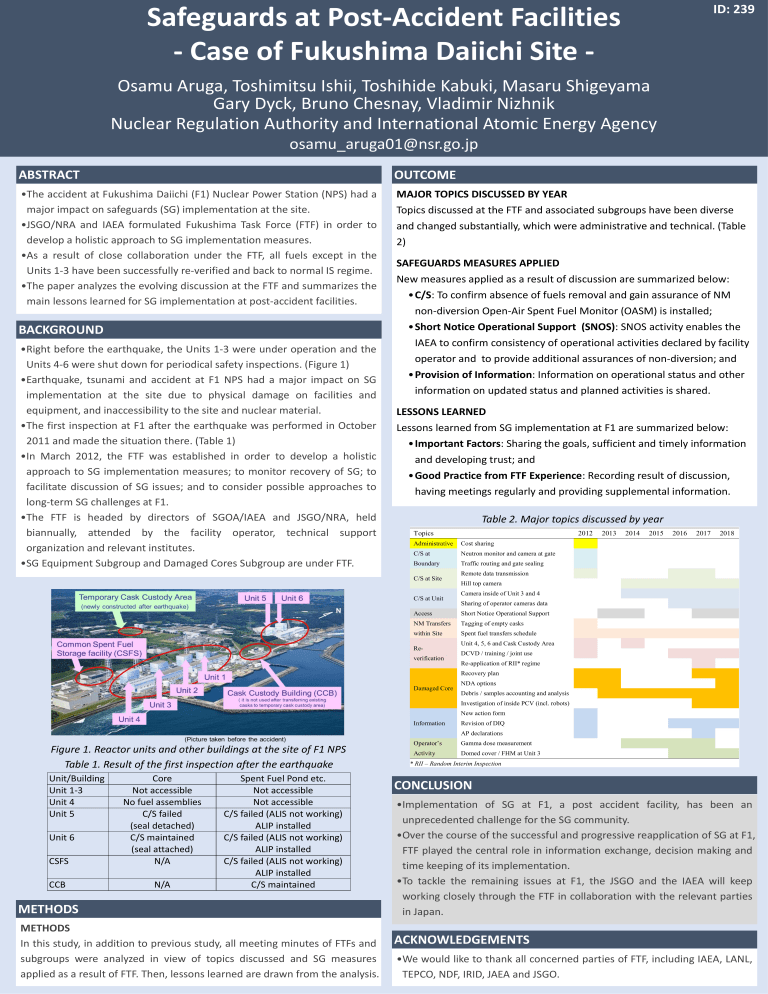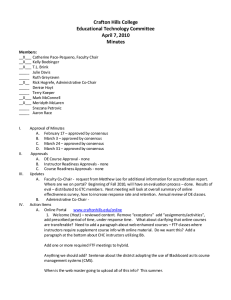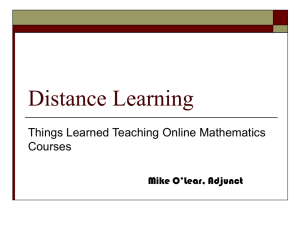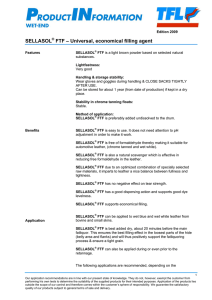
ID: 239 Safeguards at Post-Accident Facilities - Case of Fukushima Daiichi Site Osamu Aruga, Toshimitsu Ishii, Toshihide Kabuki, Masaru Shigeyama Gary Dyck, Bruno Chesnay, Vladimir Nizhnik Nuclear Regulation Authority and International Atomic Energy Agency osamu_aruga01@nsr.go.jp ABSTRACT OUTCOME •The accident at Fukushima Daiichi (F1) Nuclear Power Station (NPS) had a major impact on safeguards (SG) implementation at the site. •JSGO/NRA and IAEA formulated Fukushima Task Force (FTF) in order to develop a holistic approach to SG implementation measures. •As a result of close collaboration under the FTF, all fuels except in the Units 1-3 have been successfully re-verified and back to normal IS regime. •The paper analyzes the evolving discussion at the FTF and summarizes the main lessons learned for SG implementation at post-accident facilities. MAJOR TOPICS DISCUSSED BY YEAR Topics discussed at the FTF and associated subgroups have been diverse and changed substantially, which were administrative and technical. (Table 2) BACKGROUND •Right before the earthquake, the Units 1-3 were under operation and the Units 4-6 were shut down for periodical safety inspections. (Figure 1) •Earthquake, tsunami and accident at F1 NPS had a major impact on SG implementation at the site due to physical damage on facilities and equipment, and inaccessibility to the site and nuclear material. •The first inspection at F1 after the earthquake was performed in October 2011 and made the situation there. (Table 1) •In March 2012, the FTF was established in order to develop a holistic approach to SG implementation measures; to monitor recovery of SG; to facilitate discussion of SG issues; and to consider possible approaches to long-term SG challenges at F1. •The FTF is headed by directors of SGOA/IAEA and JSGO/NRA, held biannually, attended by the facility operator, technical support organization and relevant institutes. •SG Equipment Subgroup and Damaged Cores Subgroup are under FTF. SAFEGUARDS MEASURES APPLIED New measures applied as a result of discussion are summarized below: •C/S: To confirm absence of fuels removal and gain assurance of NM non-diversion Open-Air Spent Fuel Monitor (OASM) is installed; •Short Notice Operational Support (SNOS): SNOS activity enables the IAEA to confirm consistency of operational activities declared by facility operator and to provide additional assurances of non-diversion; and •Provision of Information: Information on operational status and other information on updated status and planned activities is shared. LESSONS LEARNED Lessons learned from SG implementation at F1 are summarized below: •Important Factors: Sharing the goals, sufficient and timely information and developing trust; and •Good Practice from FTF Experience: Recording result of discussion, having meetings regularly and providing supplemental information. Table 2. Major topics discussed by year Topics 2012 Administrative Cost sharing C/S at Neutron monitor and camera at gate Boundary Traffic routing and gate sealing C/S at Site C/S at Unit 2015 2016 2017 2018 Hill top camera Camera inside of Unit 3 and 4 Sharing of operator cameras data Short Notice Operational Support NM Transfers Tagging of empty casks within Site Spent fuel transfers schedule verification 2014 Remote data transmission Access Re- 2013 Unit 4, 5, 6 and Cask Custody Area DCVD / training / joint use Re-application of RII* regime Recovery plan Damaged Core NDA options Debris / samples accounting and analysis Investigation of inside PCV (incl. robots) New action form Information Revision of DIQ AP declarations Figure 1. Reactor units and other buildings at the site of F1 NPS Table 1. Result of the first inspection after the earthquake Unit/Building Unit 1-3 Unit 4 Unit 5 CSFS Core Not accessible No fuel assemblies C/S failed (seal detached) C/S maintained (seal attached) N/A CCB N/A Unit 6 Spent Fuel Pond etc. Not accessible Not accessible C/S failed (ALIS not working) ALIP installed C/S failed (ALIS not working) ALIP installed C/S failed (ALIS not working) ALIP installed C/S maintained METHODS METHODS In this study, in addition to previous study, all meeting minutes of FTFs and subgroups were analyzed in view of topics discussed and SG measures applied as a result of FTF. Then, lessons learned are drawn from the analysis. Operator’s Gamma dose measurement Activity Domed cover / FHM at Unit 3 * RII – Random Interim Inspection CONCLUSION •Implementation of SG at F1, a post accident facility, has been an unprecedented challenge for the SG community. •Over the course of the successful and progressive reapplication of SG at F1, FTF played the central role in information exchange, decision making and time keeping of its implementation. •To tackle the remaining issues at F1, the JSGO and the IAEA will keep working closely through the FTF in collaboration with the relevant parties in Japan. ACKNOWLEDGEMENTS •We would like to thank all concerned parties of FTF, including IAEA, LANL, TEPCO, NDF, IRID, JAEA and JSGO.


